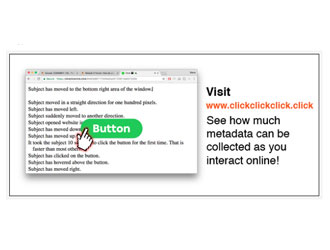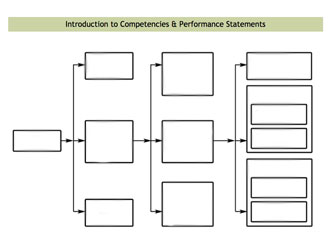Instructor Competencies for Using Rich Media
The TPACK framework: A motive for designing a set of competencies
A discussion about teaching with rich media should acknowledge the foundation principles of the Technological Pedagogical Content Knowledge (TPACK) framework as a motive for constructing a set of competencies.
TPACK is the basis of effective teaching with technology, requiring an understanding of the representation of concepts using technologies; pedagogical techniques that use technologies in constructive ways to teach content; knowledge of what makes concepts difficult or easy to learn and how technology can help redress some of the problems that students face; knowledge of students’ prior knowledge and theories of epistemology; and knowledge of how technologies can be used to build on existing knowledge to develop new epistemologies or strengthen old ones (Koehler, M. J., & Mishra, P., 2009, p. 66).
Koehler & Mishra further emphasize the contextual basis for using technologies in teaching (Rosenberg, J. M. & Koehler, M. J., 2015). This suggests a call for instructional designers, learning designers, instructional technologists, media specialists, and librarians to work in partnership with faculty to conceptualize the use of rich media in ways that are appropriate to the unique needs of a given instructional challenge.
The IBSTPI Competency Model
The structural format for producing Competencies and Performance Statements for teaching with rich media is informed by the research produced by the International Board of Standards for Training, Performance, and Instruction (IBSTPI).
IBSTPI defines competency as:
“A knowledge, skill, or attitude that enables one to effectively perform the activities of a given occupation or function to the standards expected in employment. (Richey, Rita & C. Fields, Dennis & Foxon, Marguerite, 2001, p. 31).”
The Generic IBSTPI Competency Development Model describes the flow and hierarchy of job-related skills, knowledge, and attitudes that are essential to proficiency at professional-level standards of performance.
The structure of Competencies and Performance Statements
According to the Generic IBSTPI Competency Development Model, Competencies are relatively general statements which are elaborated upon in the Performance Statements to indicate exact behaviors. The design of Competencies and Performance Statements could be framed similarly to the way Learning Outcomes and Learning Objectives are designed for typical course syllabi:
• Learning Outcomes are descriptive; Learning Objectives are prescriptive.
• Competencies are descriptive; Performance Statements are prescriptive.
Below is an excerpt from a set of IBSTPI Instructional Designer Competencies and Performance Statements (Richey et al, 2001):
Performance Statements (partial list):
- Create messages that accommodate learner needs and characteristics, content, and objectives.
- Write and edit text to produce messages that are clear, concise, and grammatically correct.
- (etc…)
Excerpt taken from “Instructional Designer Competencies” © IBSTPI – used with permission.
How can competence be assessed?
There is no single “correct” method to assess competence, and the topic will be covered here only on a foundation level. The assessor may choose to assess competence using whichever educational philosophy or instructional theory desired.
Here, we have embraced Wenger’s Community of Practice model (2015) for determining what is knowable, relevant, and present in the performance of teaching in higher education into a set of competencies. We will now set a framework for assessing performance.
Key principles of the assessment instrument framework are as follows:
- “Proficient” is designated as the target level of performance. “Exemplary” is often used in assessing student work, though it is not relevant in this context insofar as measuring attainment of a standard of performance.
- Assessment descriptions will be based on performing the specified skill consistently and independently.
“Key phrase” method of designing assessment criteria
An assessment instrument can be as simple or as granular as desired. The following example draws from the “key phrase” method used as a foundation for the development of assessment instruments in the CWPro e-portfolio assessment system by Chalk & Wire (Chalk and Wire Learning Assessment, Inc., 2013).
The example below is taken from a competency-based assessment method designed by the CWPro e-portfolio assessment system:
Step 1: Select a Performance Statement:
“Employ online techniques for downloading, sharing, and publishing rich media resources for learners.”
Step 2: Identify the key phrase embedded within the Performance Statement:
Key phrase: “…Employ online techniques…”
Step 3: Surround the key phrase with a description that refers to consistency and independence in the learner’s performance. Peg this statement as the “Proficient” level of performance.
“Able to consistently and independently employ online techniques for downloading, sharing, and publishing rich media resources for learners.”
Step 4: Generate the other performance levels using whatever language desired to indicate levels of consistency, independence, or assistance observed in the assessed performance. Additional assessment levels are provided below to demonstrate the range of granularity you could use to describe performance.
Performance Statement: “Able to consistently and independently employ online techniques for downloading, sharing, and publishing rich media resources for learners.”
Below are some completed assessment statements of each level of proficiency using the “Key phrase” method.
Novice: “Able to identify techniques for downloading, sharing, and publishing rich media resources for learners.” (This statement presumes that the learner’s skill is limited only to being able to identify when a rich media resource could be downloaded, shared, or published but is unable to perform the process due to lack of skill or knowledge).
Emerging: “With significant support, able to employ online techniques for downloading, sharing, and publishing rich media resources for learners.”
Basic: “With minimal support, able to employ online techniques for downloading, sharing, and publishing rich media resources for learners.”
Proficient: “Able to consistently and independently employ online techniques for downloading, sharing, and publishing rich media resources for learners.”
Several factors support this method for producing valid and reliable results (Chalk and Wire Learning Assessment, Inc., 2013):
- The key phrase in the assessed performance remains consistent and transparent throughout each level of performance.
- Assessment across levels is keyed strictly to observable performance in terms of the pegged level of proficiency.
- Used system-wide, supports inter-rater reliability by minimizing subjective or abstract interpretations of performance.
The example below shows a Performance Statement in a chart with three levels of assessment:
| Performance Statement | Emerging | Basic | Proficient |
| Employ online techniques for downloading, sharing, and publishing rich media resources for learners. | With significant support, able to employ online techniques for downloading, sharing, and publishing rich media resources for learners. | With minimal support, able to employ online techniques for downloading, sharing, and publishing rich media resources for learners. | Able to consistently and independently employ online techniques for downloading, sharing, and publishing rich media resources for learners. |
| Score | 1 | 2 | 3 |
Table 1 : Sample competency-based assessment scoring
Alternative labels for assessment levels could also be presented as follows:
| Performance Statement | Benchmark | Milestone 1 | Milestone 2 |
| Performance Statement | Novice | Emerging | Proficient |
| Performance Statement | Unsatisfactory | Marginal | Proficient |
As a matter of consistency, it is vital that all assessment instruments “agree” that a given score for Proficient is the same across all assessment instruments. In the example above, the target performance level of Proficient is pegged at a “3” score. Therefore, all other assessment instruments should also have “3” set as its target level for Proficient performance.
Alignment of a given score for Proficiency will enable the assessor to design an “at a glance” dashboard to indicate a summative score for all related assessments.
What is intentionally missing from the Performance Statements?
The Performance Statements in our proposed set of Competencies do not articulate all of the details related to a trainee’s expected performance. For example, we do not prescribe:
- Which devices, software, hardware, or methods of computing to use.
- Which forms of social communication to use in the community of practice.
- Which channels of internal communication to use.
- Which personnel to collaborate with.
- Which specific standards of institutional ethical practice, UDL, or ADA compliance to adhere to.
- Which theoretical underpinnings for teaching, learning, or instruction to align with.
- Which modes of instructional program delivery to which performance must be applied, i.e. face-to-face, blended/hybrid, fully online, professional development training, etc.
The intent is that the Competencies and Performance Statements can be used as a general set of standards upon which context-specific demonstrations of proficiency can be designed as needed. The instructor-in-training in such a program of professional development would be advised in advance as to the specific outcomes of their training.


